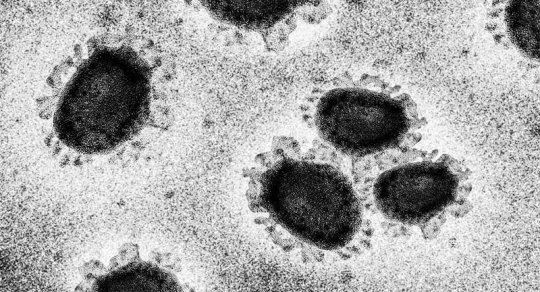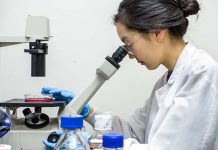The study, led by the UCL Genetics Institute, identified close to 200 recurrent genetic mutations in the virus, highlighting how it may be adapting and evolving to its human hosts.
Researchers found that a large proportion of the global genetic diversity of SARS-CoV-2 is found in all hardest-hit countries, suggesting extensive global transmission from early on in the epidemic and the absence of single ‘Patient Zeroes’ in most countries.
The findings, published today in Infection, Genetics and Evolution, also further establish the virus only emerged recently in late 2019, before quickly spreading across the globe. Scientists analysed the emergence of genomic diversity in SARS-CoV-2, the new coronavirus causing Covid-19, by screening the genomes of over 7,500 viruses from infected patients around the globe. They identified 198 mutations that appear to have independently occurred more than once, which may hold clues to how the virus is adapting.
Co-lead author Professor Francois Balloux (UCL Genetics Institute) said: “All viruses naturally mutate. Mutations in themselves are not a bad thing and there is nothing to suggest SARS-CoV-2 is mutating faster or slower than expected. So far we cannot say whether SARS-CoV-2 is becoming more or less lethal and contagious.”
The small genetic changes, or mutations, identified were not evenly distributed across the virus genome. As some parts of the genome had very few mutations, the researchers say those invariant parts of the virus could be better targets for drug and vaccine development.
“A major challenge to defeating viruses is that a vaccine or drug might no longer be effective if the virus has mutated. If we focus our efforts on parts of the virus that are less likely to mutate, we have a better chance of developing drugs that will be effective in the long run,” Professor Balloux explained.
“We need to develop drugs and vaccines that cannot be easily evaded by the virus.”
Co-lead author Dr Lucy van Dorp (UCL Genetics Institute) added: “There are still very few genetic differences or mutations between viruses. We found that some of these differences have occurred multiple times, independently of one another during the course of the pandemic — we need to continue to monitor these as more genomes become available and conduct research to understand exactly what they do.”
The results add to a growing body of evidence that SARS-CoV-2 viruses share a common ancestor from late 2019, suggesting that this was when the virus jumped from a previous animal host, into people. This means it is most unlikely the virus causing Covid-19 was in human circulation for long before it was first detected.
In many countries including the UK, the diversity of viruses sampled was almost as much as that seen across the whole world, meaning the virus entered the UK numerous times independently, rather than via any one index case.
The research team have developed a new interactive, open-source online application so that researchers across the globe can also review the virus genomes and apply similar approaches to better understand its evolution.
Dr van Dorp said: “Being able to analyse such an extraordinary number of virus genomes within the first few months of the pandemic could be invaluable to drug development efforts, and showcases how far genomic research has come even within the last decade. We are all benefiting from a tremendous effort by hundreds of researchers globally who have been sequencing virus genomes and making them available online.”
The study was conducted by researchers in the UCL Faculties of Life Sciences and Medical Sciences, alongside colleagues from Cirad and Université de la Réunion, University of Oxford, and Imperial College London, and supported by the Newton Fund UK-China NSFC initiative and the Biotechnology and Biological Sciences Research Council (BBSRC).




